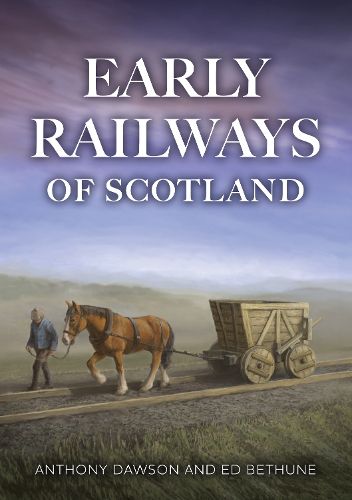Readings Newsletter
Become a Readings Member to make your shopping experience even easier.
Sign in or sign up for free!
You’re not far away from qualifying for FREE standard shipping within Australia
You’ve qualified for FREE standard shipping within Australia
The cart is loading…






Scottish railway history began in 1722 when William Dickson commenced work on the Tranent-Cockenzie Waggonway. Built entirely in wood and designed to carry coal from pits at Tranent to salt pans at Cockenzie, it was the first railway to be built in Scotland. Developing first in the most industrialised parts of the country, in the Lothians and later around Glasgow, wooden and iron railways flourished in no small part thanks to the work of Robert Stevenson. Ed Bethune and Anthony Dawson of the 1722 Waggonway Project present a century-long tour of the earliest of Scottish railways, beginning in 1722 and ending with the Garnkirk & Glasgow Railway of 1831, the first 'modern' railway in Scotland. The 1722 Waggonway Heritage Group was established in 2017 to preserve, promote and enhance the history of the Tranent-Cockenzie Waggonway through research, archaeology and community heritage initiatives. Thanks to the work of the group, much is now known about how early wooden railways were constructed and how early nineteenth-century fish-bellied rails laid on stone blocks worked, as well as the 1833 Robert Stevenson-designed harbour at Cockenzie.
Brand-new information from the archival and archaeological work into Scotland's earliest railways is showcased alongside fascinating and rare images, all serving to set the scene for the beginnings of the Scottish railway network as conceived by trailblazers William Dickson, William Adam and Robert Stevenson.
$9.00 standard shipping within Australia
FREE standard shipping within Australia for orders over $100.00
Express & International shipping calculated at checkout
Scottish railway history began in 1722 when William Dickson commenced work on the Tranent-Cockenzie Waggonway. Built entirely in wood and designed to carry coal from pits at Tranent to salt pans at Cockenzie, it was the first railway to be built in Scotland. Developing first in the most industrialised parts of the country, in the Lothians and later around Glasgow, wooden and iron railways flourished in no small part thanks to the work of Robert Stevenson. Ed Bethune and Anthony Dawson of the 1722 Waggonway Project present a century-long tour of the earliest of Scottish railways, beginning in 1722 and ending with the Garnkirk & Glasgow Railway of 1831, the first 'modern' railway in Scotland. The 1722 Waggonway Heritage Group was established in 2017 to preserve, promote and enhance the history of the Tranent-Cockenzie Waggonway through research, archaeology and community heritage initiatives. Thanks to the work of the group, much is now known about how early wooden railways were constructed and how early nineteenth-century fish-bellied rails laid on stone blocks worked, as well as the 1833 Robert Stevenson-designed harbour at Cockenzie.
Brand-new information from the archival and archaeological work into Scotland's earliest railways is showcased alongside fascinating and rare images, all serving to set the scene for the beginnings of the Scottish railway network as conceived by trailblazers William Dickson, William Adam and Robert Stevenson.